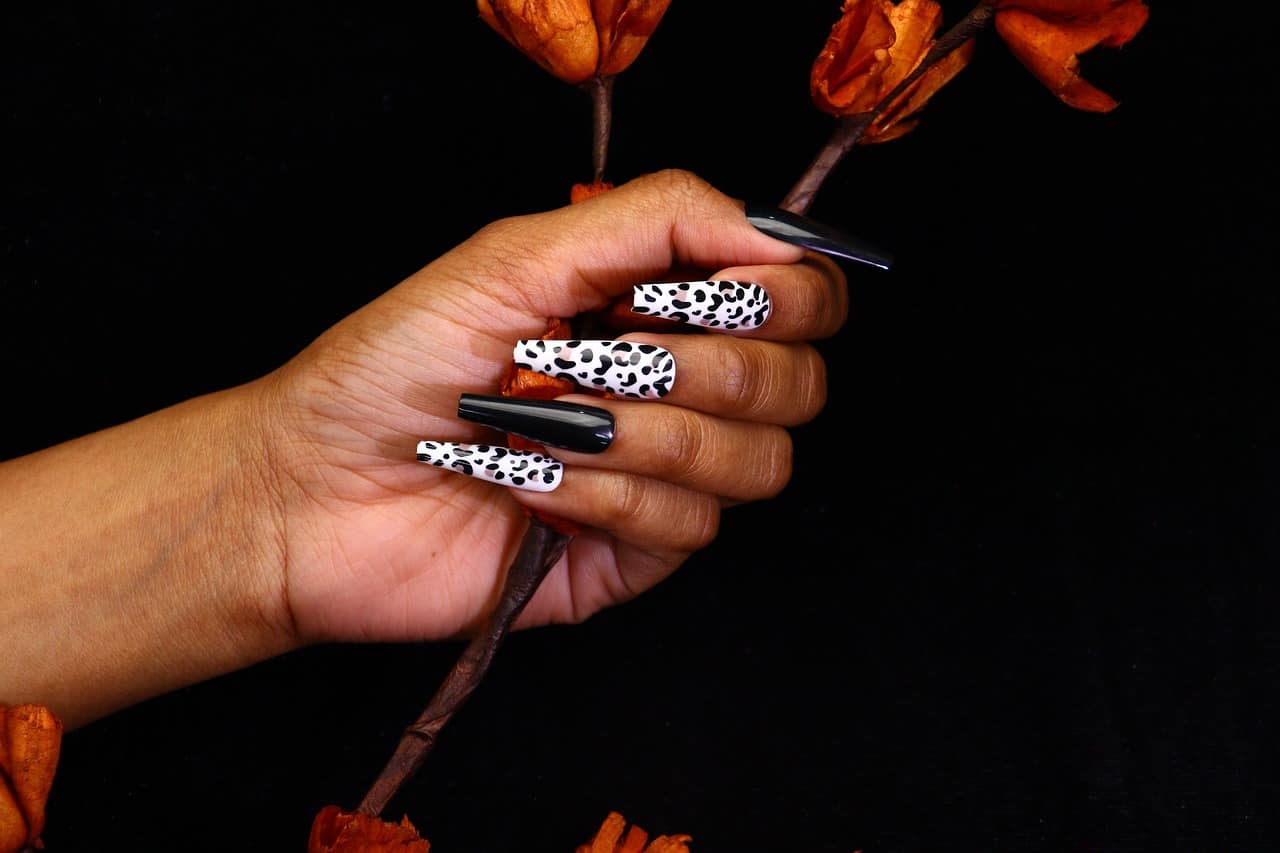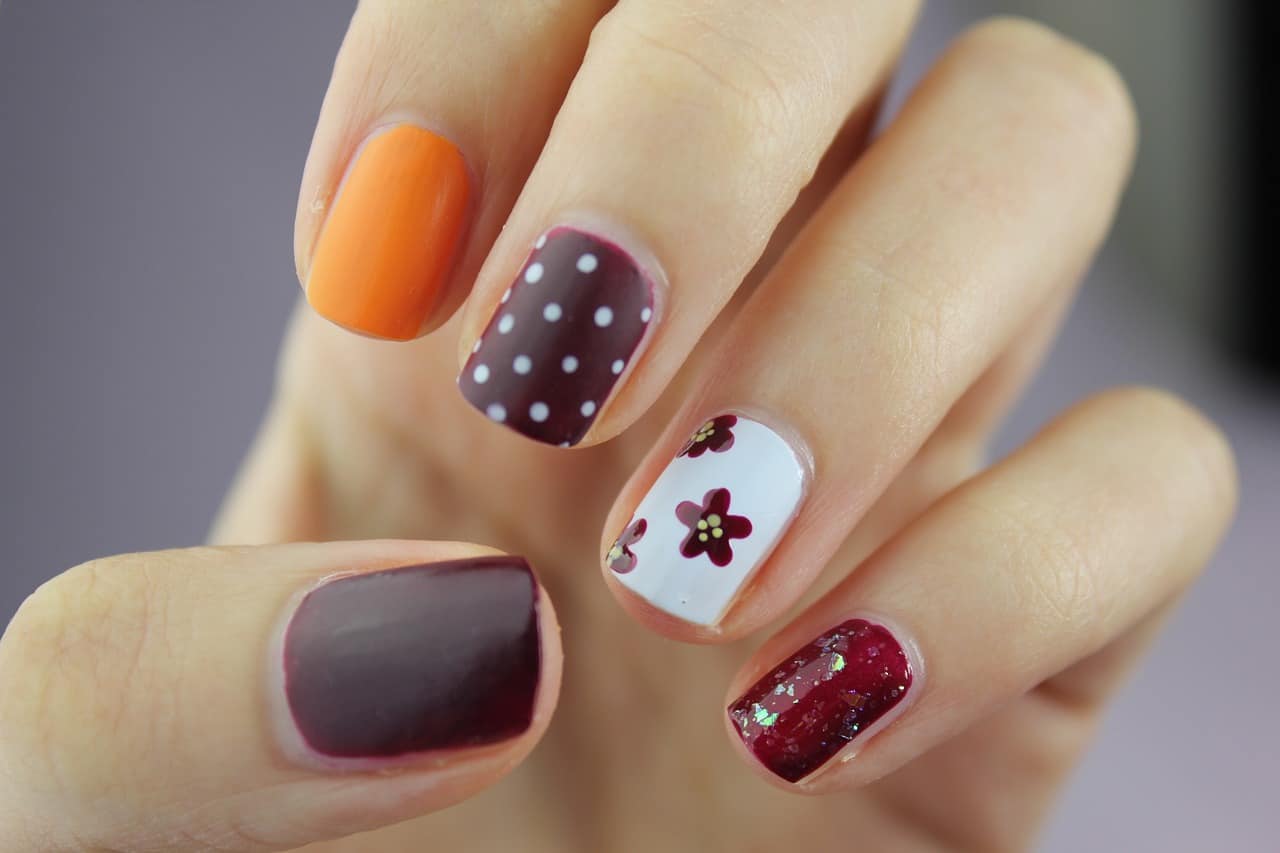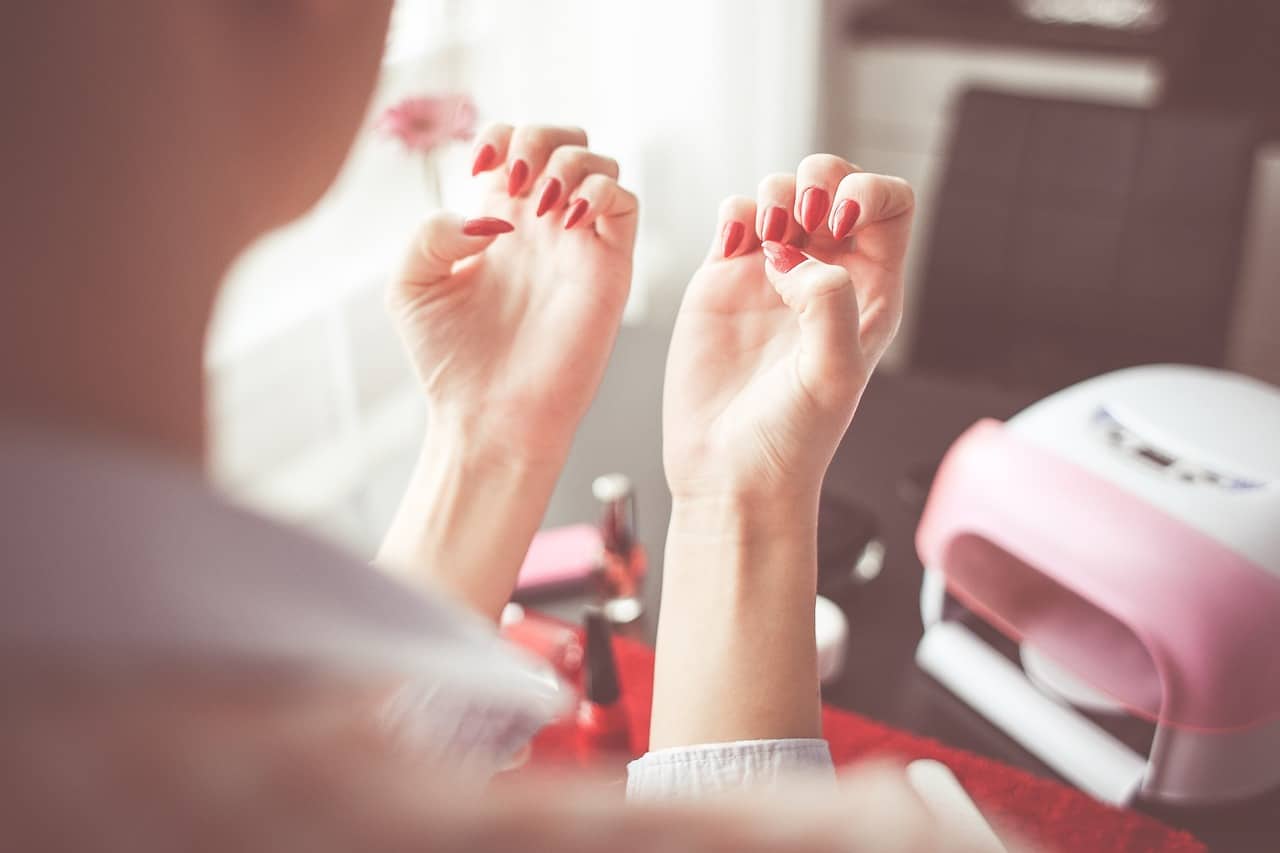Removing acrylic nails without acetone can be done using alternative methods, although it may take a bit more time and effort. Here’s a step-by-step guide on how to do it:
Remove Acrylic Nails Without Acetone
Blog Post Content
Materials you’ll need Removing acrylic nails without acetone
- Nail clippers: Start by getting a pair of nail clippers to trim your acrylic nails down as much as you can without harming your natural nails.
- Nail file: You’ll also require a nail file, preferably one with a coarse surface. Use this to gently file down the top layer of your acrylic nails. Be careful not to file too hard to prevent any harm to your natural nails.
- Warm water: Fill a bowl with warm water. To make the process more effective, add a few drops of olive oil or cuticle oil to this water. This warm water soak will help to soften the acrylic.
- Olive oil or cuticle oil: This is for the water mixture mentioned above, to aid in the softening of the acrylic nails.
- A bowl: You’ll need a bowl to soak your nails in the warm water mixture.
- Aluminum foil: Aluminum foil will be used later in the process to create wraps for your nails.
- Cotton balls or cotton pads: These will be needed to soak with warm water or cuticle oil and place under the aluminum foil wraps.
What can I use to remove acrylic nails at home?
Steps Removing acrylic nails without acetone
- Clip the acrylic nails: Begin by carefully clipping the acrylic nails as short as possible without affecting your natural nails. This initial step will make the removal process smoother.
- File the top layer: Use the coarse nail file to gently file the top layer of the acrylic nails. This helps to thin them out and makes it easier to remove them.
- Soak your nails: Fill a bowl with warm water and add a few drops of olive oil or cuticle oil to it. Soak your nails in this mixture for about 20-30 minutes. The warm water and oil will help to further soften the acrylic.
- Check for progress: After soaking, try to gently pry the acrylic nails off using a wooden cuticle stick or an orange stick. If they don’t come off easily, repeat the soaking process for another 10-15 minutes.
- Use dental floss: If the acrylic nails still don’t come off easily, you can try sliding dental floss gently between the acrylic and your natural nails. Be very gentle to avoid harming your natural nails. This technique can help to lift the acrylic nails.
- Wrap with aluminum foil: If needed, cut small pieces of aluminum foil and soak them in warm water or cuticle oil. Wrap each nail with a piece of soaked aluminum foil, ensuring it’s snug but not too tight. Leave this on for about 10-15 minutes.
- Check and repeat: After removing the foil wraps, check if the acrylic nails are loose enough to be gently peeled off. If they’re not, you may need to repeat the soaking and foil wrapping process until the acrylic nails can be easily removed.
- Moisturize: After successfully removing the acrylic nails, make sure to moisturize your natural nails and cuticles, as they may be dry from the removal process.
Remember to be patient and gentle throughout the process to avoid damaging your natural nails. If you encounter any resistance or are concerned about the condition of your nails, it’s a good idea to seek professional help from a nail technician or a salon
How do you remove acrylic nails with just nail polish remover?

Removing acrylic nails with just nail polish remover (which typically contains acetone) can be challenging, but it’s possible with some patience and care. Here’s a step-by-step guide:
Materials you’ll need:
- Acetone-based nail polish remover: Make sure it contains acetone, as acetone-free removers won’t effectively dissolve acrylic nails.
- Cotton balls or cotton pads: You’ll need these to apply the nail polish remover.
- Aluminum foil: To create foil wraps for your nails.
- Nail buffer or nail file: For gently filing the top layer of the acrylic nails.
- Cuticle oil or moisturizer: To hydrate your nails and cuticles after the process.
Steps:
- File the acrylic nails: Start by gently filing the top layer of the acrylic nails using a nail buffer or a nail file. This will help break the seal of the acrylic and allow the nail polish remover to penetrate more effectively. Be careful not to file too aggressively to avoid damaging your natural nails.
- Soak cotton balls/pads: Take a cotton ball or cotton pad and saturate it with acetone-based nail polish remover.
- Apply to nails: Place the soaked cotton ball or pad on top of one of your acrylic nails. Make sure it covers the entire nail.
- Wrap in foil: Wrap the cotton-covered nail with a small piece of aluminum foil to hold it in place. Repeat this process for all your acrylic nails.
- Wait: Leave the foil wraps on for about 20-30 minutes. This allows the acetone to penetrate and soften the acrylic nails.
- Check and gently push: After 20-30 minutes, remove the foil wraps from one nail. Check if the acrylic has softened. If it has, you can gently push or slide the acrylic off using an orange stick or a wooden cuticle pusher. Be careful not to force it; if it doesn’t come off easily, re-wrap the nail and wait a little longer.
- Repeat for other nails: Continue this process for all your acrylic nails, one at a time.
- Moisturize: Once you’ve successfully removed all the acrylic nails, be sure to moisturize your natural nails and cuticles, as they may be dry from the acetone exposure.
Please note that this method can be time-consuming and may still require some effort. It’s essential to be patient and gentle throughout the process to avoid damaging your natural nails. If you encounter resistance or are concerned about the condition of your nails, consider seeking professional help from a nail technician or a salon.
Is acetone the only way to remove acrylic nails?

While acetone is one of the most commonly used and effective methods for removing acrylic nails, it’s not the only way. There are alternative methods for acrylic nail removal, although they may not be as efficient or gentle on your natural nails. Here are a few non-acetone methods:
- Soaking in Hot Water: You can soak your acrylic nails in hot water for an extended period to soften the acrylic. This method takes time and patience, as you’ll need to soak your nails for 30-60 minutes or even longer. After soaking, you can attempt to gently pry the acrylic nails off.
- Using Dental Floss: Slide a piece of dental floss under the edge of the acrylic nail and gently work it back and forth to lift the acrylic. This method can be effective but requires care to avoid damage to your natural nails.
- Using Nail Clippers and Files: Trim the acrylic nails down as much as possible with nail clippers. Then, carefully file down the remaining acrylic layer until it’s thin enough to gently pry off. Be cautious not to damage your natural nails.
- Using a Nail Drill: A professional-grade nail drill can be used to grind away the acrylic layers gradually. This method should be performed by a trained nail technician or a professional to avoid damage to your natural nails.
- Professional Removal: The safest and most reliable way to remove acrylic nails without acetone is to visit a nail salon or a nail technician. They have specialized tools and techniques to remove acrylic nails safely and without harming your natural nails.
Keep in mind that while these methods can work, they are generally less effective and may require more effort and time compared to using acetone. Additionally, some of these methods can pose a higher risk of damaging your natural nails if not done correctly. If you choose to use an alternative method, proceed with caution and consider seeking professional assistance if you’re unsure about the process.
How do you remove acrylic nails with hot water?
Removing acrylic nails with hot water can be a more time-consuming method compared to using acetone, but it can be gentler on your natural nails. Here’s a step-by-step guide on how to remove acrylic nails with hot water:
Materials you’ll need:
- A bowl large enough to comfortably soak your fingertips.
- Boiling water.
- A towel.
- A wooden stick or a cuticle pusher.
- A nail buffer or nail file.
- Moisturizer or cuticle oil.
Steps:
- Boil water: Start by boiling enough water to fill the bowl you’re using.
- Trim acrylic nails: Use nail clippers to trim the acrylic nails down as much as possible without cutting into your natural nails. This reduces the thickness of the acrylic, making it easier to remove.
- File the acrylic: Gently file the top layer of the acrylic nails using a nail buffer or a nail file. This roughens the surface and helps the hot water penetrate more effectively.
- Prepare the bowl: Pour the boiling water into the bowl, ensuring it’s not too hot to handle. Leave a safe space at the top of the bowl to avoid any splashing.
- Soak your nails: Submerge your fingertips, with the acrylic nails, into the hot water. The heat will soften the acrylic, making it easier to remove. Be cautious not to burn yourself; it should be comfortably warm but not scalding.
- Soak for 20-30 minutes: Keep your fingertips in the hot water for 20-30 minutes or until you notice that the acrylic nails have become more pliable.
- Test the acrylic: After soaking, remove one hand from the water and use a wooden stick or a cuticle pusher to gently pry up the softened acrylic. If it doesn’t come off easily, continue soaking and testing periodically.
- Gently remove acrylic: Once the acrylic is sufficiently softened, use the wooden stick or cuticle pusher to gently lift and push the acrylic off your natural nails. Be careful not to force it or use excessive pressure to avoid damaging your natural nails.
- Repeat for other nails: Continue this process for all your acrylic nails, one at a time.
- Moisturize: After successfully removing all the acrylic nails, moisturize your natural nails and cuticles with a hydrating lotion or cuticle oil, as the hot water may have dried them out.
This method requires patience, as it can take some time for the acrylic to soften adequately for removal. Be gentle throughout the process to prevent damage to your natural nails. If you encounter any resistance or are concerned about the condition of your nails, consider seeking professional help from a nail technician or a salon.
How to take off acrylic nails with vinegar

Vinegar can be used as an alternative to acetone for removing acrylic nails, but it may take longer and require more effort. Here’s a step-by-step guide on how to remove acrylic nails with vinegar:
Materials you’ll need:
- White vinegar (preferably distilled).
- A bowl or container.
- A towel.
- A wooden stick or a cuticle pusher.
- Nail clippers.
- A nail file.
- Moisturizer or cuticle oil.
Steps:
- Trim the acrylic nails: Use nail clippers to trim the acrylic nails down as much as possible without cutting into your natural nails. This reduces the thickness of the acrylic, making the removal process more manageable.
- File the acrylic: Gently file the top layer of the acrylic nails using a nail file. This helps to roughen the surface, allowing the vinegar to penetrate more effectively.
- Prepare the vinegar solution: Pour enough white vinegar into a bowl or container to submerge your fingertips. You don’t need to heat the vinegar; it can be used at room temperature.
- Soak your nails: Place your fingertips, with the acrylic nails, into the bowl of vinegar. Ensure that the acrylic nails are fully submerged.
- Soak for 30-45 minutes: Leave your fingertips in the vinegar for 30-45 minutes. The vinegar will gradually soften the acrylic nails during this time.
- Check the acrylic: After soaking, remove one hand from the vinegar and use a wooden stick or a cuticle pusher to gently pry up the softened acrylic. If it doesn’t come off easily, continue soaking and testing periodically.
- Gently remove acrylic: Once the acrylic is sufficiently softened, use the wooden stick or cuticle pusher to gently lift and push the acrylic off your natural nails. Be careful not to force it or use excessive pressure to avoid damaging your natural nails.
- Repeat for other nails: Continue this process for all your acrylic nails, one at a time.
- Moisturize: After successfully removing all the acrylic nails, moisturize your natural nails and cuticles with a hydrating lotion or cuticle oil, as the vinegar may have dried them out.
Keep in mind that vinegar may take longer to soften the acrylic compared to acetone, so patience is key. Be gentle throughout the process to prevent damage to your natural nails. If you encounter any resistance or are concerned about the condition of your nails, consider seeking professional help from a nail technician or a salon.
How to remove acrylic nails with oil
Removing acrylic nails with oil is a gentler and less harsh alternative compared to using acetone or other chemical-based solutions. Here’s a step-by-step guide on how to remove acrylic nails using oil:
Materials you’ll need:
- Olive oil or any vegetable oil.
- A bowl or container.
- A towel.
- A wooden stick or a cuticle pusher.
- Nail clippers.
- A nail file.
- Moisturizer or cuticle oil.
Steps:
- Trim the acrylic nails: Start by using nail clippers to trim the acrylic nails down as much as possible without cutting into your natural nails. Reducing the thickness of the acrylic makes the removal process easier.
- File the acrylic: Gently file the top layer of the acrylic nails using a nail file. This step helps roughen the surface, allowing the oil to penetrate more effectively.
- Prepare the oil bath: Pour enough olive oil or vegetable oil into a bowl or container to fully submerge your fingertips. The oil should be at room temperature, and you don’t need to heat it.
- Soak your nails: Place your fingertips, with the acrylic nails, into the bowl of oil. Ensure that the acrylic nails are fully submerged.
- Soak for 30-45 minutes: Leave your fingertips in the oil for 30-45 minutes. The oil will gradually soften the acrylic nails during this time.
- Check the acrylic: After soaking, remove one hand from the oil bath and use a wooden stick or a cuticle pusher to gently pry up the softened acrylic. If it doesn’t come off easily, continue soaking and testing periodically.
- Gently remove acrylic: Once the acrylic is sufficiently softened, use the wooden stick or cuticle pusher to gently lift and push the acrylic off your natural nails. Be careful not to force it or use excessive pressure to avoid damaging your natural nails.
- Repeat for other nails: Continue this process for all your acrylic nails, one at a time.
- Moisturize: After successfully removing all the acrylic nails, moisturize your natural nails and cuticles with a hydrating lotion or cuticle oil, as the oil may have dried them out.
Using oil is a more gentle method for acrylic nail removal, but it may take longer compared to chemical-based solutions. Be patient throughout the process, and be gentle to prevent damage to your natural nails. If you encounter resistance or are concerned about the condition of your nails, consider seeking professional help from a nail technician or a salon
